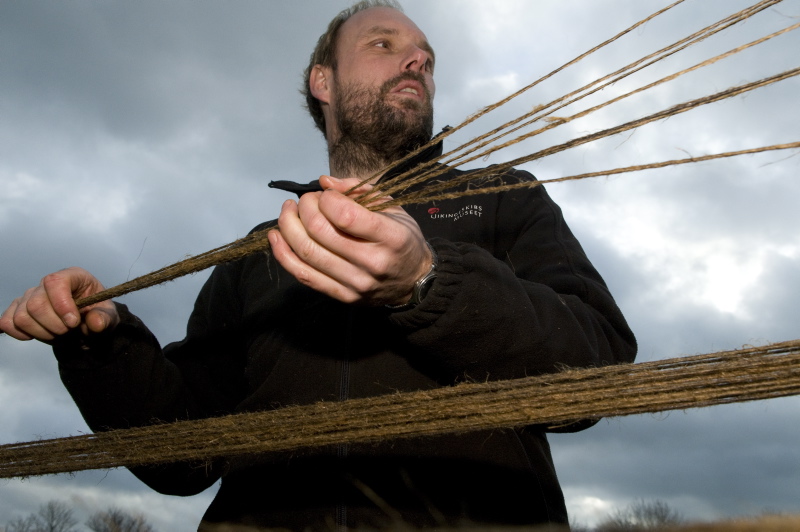Ropemaker
The craft of ropemaking is an essential part of the boatbuilding process. The rigging is just as crucial an element of the finished vessel as the hull itself, and the ropemaker is a permanent member of the Museum’s boatbuilding team. The ropemaker works year-round to produce rope for the new vessels built at the boatyard and also to maintain and repair the rigging of the Museum’s wider boat collection.
Craft
Ropemaking is one of the oldest crafts in the world and many of the techniques and tools used at the Museum’s ropemaking workshop today have remained relatively unchanged since the Viking Age. There is a range of historical and archaeological evidence for the types of materials used in ropemaking. It suggests that during the Viking period, the predominant material was lime bast, supplemented with ropes of pine and other plant materials, hide (walrus, seal, deer elk or ox), hair (horsehair, cow tail hair and pig bristle) and wool. While hemp would emerge as the dominant ropemaking material during the Middle Ages, to date there is no definitive evidence for production of hemp rope in the Viking Age.
Research
The production and use of rope for sailing reconstructions of archaeological ship finds is an important part of the Museum’s experimental archaeological research. The different materials used in rope making all have their own inherent strengths and weaknesses. Bast can resist a high amount of friction but is weakened if frequently tied in knots. Horsehair was often used to produce sheet rope as it doesn’t freeze, but results in quite a rough rope. Wool is highly elastic and very readily available, while hide from seal and walrus has a uniform thickness and incredible resistance to wear, which makes it an ideal rigging material. The various materials are therefore better suited to specific functions – either in the standing or running rigging – and are selected accordingly. How the rigging performs will ultimately dictate how a ship can sail, and the longevity of the rigging on the various reconstructed boats and ships is something that is routinely examined and documented.
Workshop
The Museum has a permanent workshop on the Museum Island, but you can also see the ropemakers work on the various ships and boats around the Museum Harbour. You are always welcome to visit the workshop and learn more about this ancient craft.
